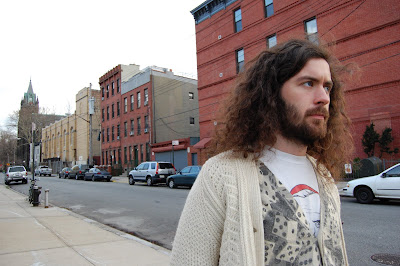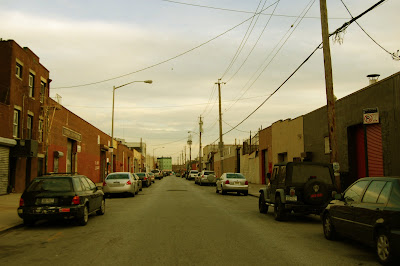

 Our NY travellings took us to Red Hook deep in the heart of Brooklyn. My friend had told me about the area before we left England. From what she'd read about it she described it as an up-and-coming Williamsburg, as the area is beginning to brag of the odd trendy boutique and bar. I expected to see Peaches Geldof swanning her round, spitting her lisp and poisonous personality at anyone who crossed her path. I expected the odd Agyness Deyn wannabe on a bicycle with a wicker basket or some Gaurdian reader talking about the post-modern signifance of Harry Potter but it was nothing like that at all. It was one of the wierdest places I've ever been to.
Our NY travellings took us to Red Hook deep in the heart of Brooklyn. My friend had told me about the area before we left England. From what she'd read about it she described it as an up-and-coming Williamsburg, as the area is beginning to brag of the odd trendy boutique and bar. I expected to see Peaches Geldof swanning her round, spitting her lisp and poisonous personality at anyone who crossed her path. I expected the odd Agyness Deyn wannabe on a bicycle with a wicker basket or some Gaurdian reader talking about the post-modern signifance of Harry Potter but it was nothing like that at all. It was one of the wierdest places I've ever been to.Once ranked one of New York's most dangerous neighbourhoods, Red Hook creeps into the East River and mourns the loss of it's once powerful industrial prowess. It was once a villiage seperate from the rest Brooklyn and in 1636 the Dutch colonists settled in the area. With its buildings built on red clay and it bieng the only area to face the Statue of Liberty face on, it's a pretty special place. As the area is right by the water, it was once a very important docking town, where food and others goods were imported and exported on the regular basis. Perhaps with the expansion of other means of transport, this industry slowly crept away.
Now sit old warehouses, drowning in rust; the high slatted walls covered in graffiti (this was the only are we saw, apart from Williamsburg, that featured a lot of graffiti. Manhattan was totally clean of it, the subways bieng on partially covered). Boats wait stoically by the dock, bobbing from side to side like forgotten cola cans thrown into the sea. Houses that were once nestled between other houses stand alone, their neighbours bieng victims to demolition and neglect. There are hardly any people around and it felt as though Manhattan was a myth, distant in memory and feeling. Perhaps this is because it's pretty hard to get here. There are hardly any subway stops and few buses. It is possible to get the ferry but again, finding out where that docks was pretty much impossible.
We got on the F train and exited in a very fancy area of large houses and Christmas light displays. One man told us to come and see him turn his on (actually he yeld it to us when we were on the other side of the street. 'Come see my light diplay later on folks!' Ah, Americans.) and bratty kids with stuck up parents admired them as their mummies dragged them away. It was a smaller Manhattan, wealthy and unubashed about it and and I thought 'Is this it?' Then you cross and motorway over a bridge and carry on walking. You pass car parks, big billboards and industrial estates and you just have to follow your instincts till you reach the rusty browns and greys of this tiny, isolated place. When we got there we made sure we left before dark as it would have been a nigtmare trying to find our way back.











No comments:
Post a Comment